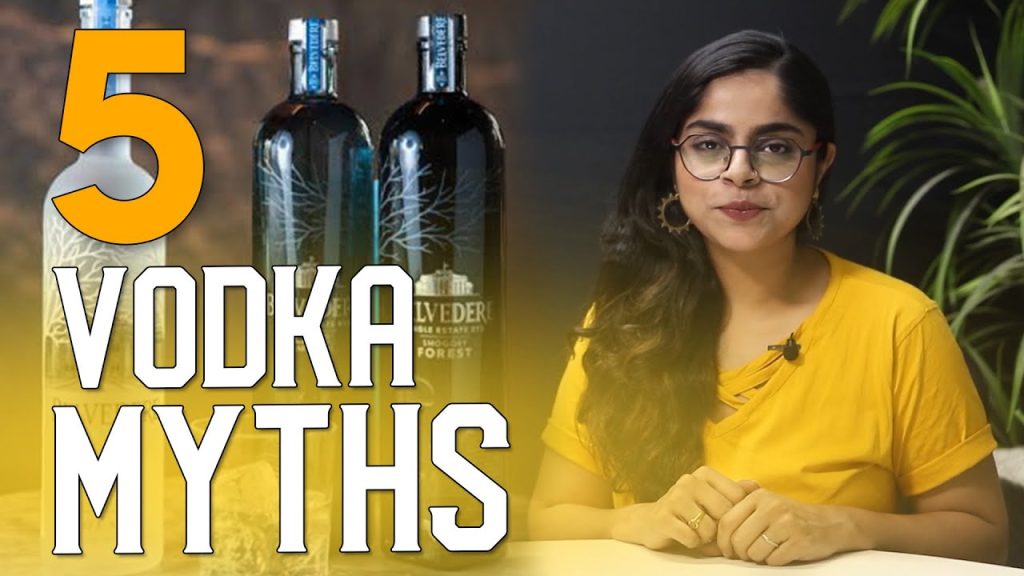Welcome, esteemed customers, to our latest blog post where we delve into the fascinating world of vodka production. Today, we embark on a journey to unravel the secrets behind the creation of this beloved spirit that has stood the test of time and conquered the palates of millions around the globe. As you join us in this exploration, prepare to be transported behind the scenes of distilleries and discover the meticulous processes involved in turning humble ingredients into the smooth and refined elixir that is vodka. From the careful selection of grains to the intricate art of distillation, every step in the creation of this iconic beverage requires precision, expertise, and centuries-old techniques. So grab a glass, sit back, and let us unveil the intriguing secrets behind how is vodka made.
Overview about vodka
Vodka is a strong drink, usually around 38% alcohol by volume. But here’s the cool part – it can be made from all sorts of things like grains, vegetables, potatoes, sugar beet, and even corn. Oh, and here’s a fun fact: sometimes you can taste the flavor of the base ingredient in the vodka, and sometimes you can’t.
History origins of vodka

Back in the day, in Poland specifically, vodka was actually invented way back in 1405. Pretty cool, right? The Polish peeps called it ‘wódka’ and it originally referred to alcohol-based medicines and beauty products made from frozen wine. Fast forward to the 16th century, and it was common for families to make their own vodka at home. They would add fruit and herbs to make it taste better because, let’s be real, straight-up alcohol can be rough. This tradition of using natural flavorings still goes on in Polish vodka production today.
Do all vodkas taste the same?
Contrary to popular belief, vodka actually has its own unique flavors. Discerning drinkers know that not all vodkas are created equal, and they have their own favorite brands. So, next time you grab a bottle, remember that there’s more to vodka than meets the eye.
What exactly is vodka made from?
Vodka – popular drink is actually a clear distilled alcoholic beverage. It has its origins in Poland, Russia, and Sweden. Vodka is primarily made up of water and ethanol, with the occasional hint of impurities and flavorings. Traditionally, it’s produced by distilling liquid from fermented cereal grains and potatoes, which were introduced to Europe in the 1700s. But nowadays, you can find modern brands using corn, sugar cane, fruits, honey, and even maple sap as their base ingredients. So, the next time you take a sip of vodka, remember the complex process that goes into creating this beloved drink.
How is vodka made?
So, how is vodka made? Well, it all starts with water and ethanol from fermented cereal grains. But some vodka brands like to mix things up by using potatoes or sugar beets instead. And to give their liquor a little extra flair, they throw in some botanicals and spices. After all the fermenting and distilling, they put it through a fancy filtration process to get rid of any impurities and make it nice and smooth.
Number times distilled vodka
Most vodkas are distilled 3 to 7 times, but some go up to 10 or more. Why? To get rid of any impurities or contaminants.
See more : Does vodka go bad? | Shelf life and storing tips of vodka
Experts say that 2 or 3 distillations are usually enough, but there’s no harm in going for more if you want top-notch vodka. Some distillers believe that the more times vodka is distilled, the purer and smoother it becomes. By removing impurities like methanol and fusel oils, the vodka becomes cleaner and easier to drink. And we all know, the smoother the vodka, the better it tastes.
Proofing – how the alcohol content is measured in vodka
In the US, vodka is pretty straightforward. They use a system called “proof” which is simply double the alcohol by volume. So if a vodka is 40% ABV, it’s 80 proof. And if it’s 45% ABV, it’s 90 proof. Anything 100 proof or higher is considered a “proof spirit.”
Notes about additives and reverse osmosis in some vodkas

You might be surprised to learn that many U.S. vodka distillers are allowed to add additives to their products without disclosing it. But not Felene. Our vodka contains ZERO additives.
Believe it or not, about 90% of commercially available vodkas in the U.S. use citric acid and sweeteners to cover up harsh flavors and the infamous vodka burn. This includes many of the popular domestic and imported brands.
So why does this matter? Well, for one, it’s not authentic. The only reason to use additives is to hide the fact that a vodka is subpar. And let’s not forget the “acid” in citric acid. Adding it to vodka brings down the pH and makes it more acidic, which is typically associated with lower-quality vodka. But not Felene Vodka. We believe that a well-made vodka should stand on its own, without the need for balancing agents and sweeteners. That’s why our vodka maintains a naturally higher pH level.
Experience the difference with Felene Vodka – a truly pure and delicious vodka. Plus, it’s gluten-free, organic, and non-GMO.
Determining the price of a bottle vodka
Figuring out the price of a vodka bottle can be tricky. With “premium” vodkas, the cost of the glass bottle itself is often the biggest expense. Sometimes, the bottle costs as much or even more than the vodka inside. So, having a fancy bottle doesn’t always mean you’re getting a better vodka.
If you’re buying vodka to decorate your bar and want it to look beautiful, then it’s all about personal taste. But if you’re after high-quality liquid, the bottle design is just an extra cost that can make up a big chunk of the price.
See more : What does vodka taste like? | All things about the vodka
Unfortunately, many vodka brands are considered premium simply because they’re expensive, not because of what’s inside. As a smart consumer, you should ignore the fancy packaging. Marketing tactics can easily influence our perception of quality, but they don’t always reflect the truth. Claims like “number of times distilled” and fancy packaging are just tricks to make you think it’s better. Let’s not be fooled – these things say more about the brands’ marketing budgets than the actual quality of the vodka.
How much does cost to launch your own vodka brand?
Ever thought about starting your own vodka brand? Well, the price tag can vary quite a bit. It could set you back anywhere from $10,000 to $100,000. The final cost depends on factors like the type of liquor you want to create, how you plan to distribute it, and of course, how much marketing you’re willing to do.
Myths about vodka that you may not know

Here are some surprising myths about vodka that you probably didn’t know:
Not all vodkas taste the same
Contrary to popular belief, vodka does have distinct flavors. Different vodkas reflect their origins and distillation process, resulting in subtle differences that can be detected by seasoned drinkers.
More distillations don’t necessarily make better vodka
Overdistilling can strip away the flavors and character of the base ingredients, leaving you with pure alcohol. Some brands are now embracing their unique identities and moving away from excessive distillation.
Vodka isn’t always made from potatoes
While potato vodka exists, vodka can be made from a variety of ingredients such as rye, corn, wheat, and even grapes. The base ingredients typically don’t have a significant impact on the final flavor.
Don’t skimp on quality when it comes to cocktails
Even in mixed drinks where the vodka’s flavor is masked, using a low-quality vodka can ruin the overall experience. Trust us, you’ll thank yourself the next day for splurging on a good bottle.
Price doesn’t always equal quality
Don’t be fooled by expensive bottles. The price of vodka is not always indicative of its quality. The best way to find the right vodka for you is to explore different price ranges and taste as many varieties as possible.

Ronald B Gamrot is the owner of Silverking Brewery, one of the most successful craft breweries in North America. He started the business from scratch in his garage, and it has since grown into a multimillion-dollar operation. Ronald is passionate about brewing delicious beer and providing top-notch customer service. He is a respected member of the brewing community and often speaks at industry events.




How is vodka made from potatoes? Potatoes are just one thing from which vodka is made.
The basic recipe is “cook it, mash it up (puree it), add water and then yeast, and let it ferment for a week or two.” So, bake or boil your potatoes, puree them, add some water, add yeast. Yeast turns starch into alcohol, the resulting “soup” will be 5~10% alcohol. Then you strain out all the solids and distill the liquid. Distillation gets rid of much of the water, increasing the percent alcohol to 75%~90%. Then you add water to bring the result down to 40% ABV (80 proof).
If you are ‘high tech’, you will add a bunch of enzymes to your cooked potato puree – certainly alpha and beta Amylase. The idea is to make as much of the vegetable matter into digestable starches.
Technically, frozen potatoes will be better. Starch fissions to the simple sacharids when frozen, better “food” for the yeasts. Remember russian winter 🙂
How is vodka made, and how can I patent a unique brand? In the US, most folks buy tank cars of ethanol from big producers like ADM (Archer Daniels Midlands), add distilled water and put it in a pretty bottle with a fancy label and an elaborate story about their fancy vodka.
Thanks for sharing!
I had some vodka I had made that I soaked cacao nibs in for a week. This transferred the cacao flavor into the spirit and the chocolate flavor really came through. BUT, along with the flavor came the color: the spirit was now a murky deep brown/black from that nibs and particulates floating in the vodka.
Then I bought an airstill…and needed something to test after I did my vinegar and sac run. So I put my chocolate vodka in, added water to get enough volume, and ran it. Spirit came out clear but kept the flavors it got from the maceration.
I dealt with the particulates when I did this by running the resulting spirit through a coffee filter.